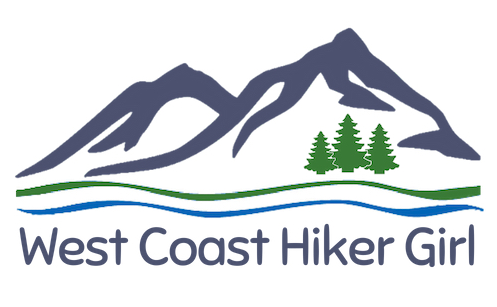In honour of the U.S. National Park Service’s 100th Anniversary, I’ve introduced a feature called “Find Your Park,” named after the popular hashtag the NPS has been using this year to promote the parks. Each unique post features one of the U.S. National Parks that I have had the chance to visit.
Park: Kings Canyon National Park
Location: Fresno County, CA
Established: March 4, 1940
Size: 461,901 acres
Annual visitors: 566,810 (2011)
Backcountry fee: $10 per permit
Times visited: 3
A few weeks back I introduced you to the front-country zone of Kings Canyon National Park. However lovely it is to have all the amenities you can pack into your car, Kings Canyon is really designed as a backpacker’s park, with most of the over 450,000 acres requiring an overnight hike to access.
My first two visits to Kings Canyon National Park were through the backcountry, and I’d like to share those experiences with you here. I’d love these posts to encourage you to strengthen your leg muscles, prep your gear, and head out on the trail for an overnight adventure.

Dusy Basin, as seen from Bishop Pass
Trip 1: South Lake to North Lake Loop
Date: August 1-7, 2010
Distance: 54 mi. / 87 km
The trailhead for this loop is accessed from the east side of the Sierras, from near Bishop, California. The trailhead is actually in the John Muir Wilderness, and permits are managed by Inyo National Forest.
We were lucky enough to get exactly the permit we wanted, and hit the trail bright and early on a Sunday morning. It was my first time backpacking in the Sierras, and my hiking partner (my future husband!) had wisely chosen to shorten our daily miles to be very manageable. The loop can certainly be done in 4 or 5 days, for those who are ambitious and in great high-altitude shape.
Our first day we hiked from South Lake to Dusy Basin (pictured above), climbing up and over Bishop Pass with an elevation of nearly 12,000 feet. It was definitely a challenge for my sea-level lungs to make it up and over the pass. I have a great appreciation for the high peaks of California thanks to this particular trip.

The view of LeConte Canyon
On our second day, we dropped down to LeConte Canyon, passing amazing waterfalls. From there we turned north-west and followed the roaring Kings River to a great campsite beyond Big Pete Meadows.
Our third day on trail was a lot more challenging as we climbed 2700 feet through rocky, switchbacking trail to Muir Pass. We passed flowering meadows, high alpine lakes and eventually climbed out of the tree line and through late-season snow. It was quite a relief to reach the iconic stone shelter in the pass.

Helen Lake, above the tree line near Muir Pass.

Almost to the shelter in Muir Pass.
Our last miles of the day took us past Wanda Lake and down to the beautifully-coloured and perfectly named Sapphire Lake. The challenges of our high-altitude day caught up with me that afternoon. I suffered from a mix of exposure and dehydration, plus exertion at high elevation. After downing some electrolyte-filled liquids, I tucked in and fell asleep for a well-needed and well-deserved rest.
Thankfully the next day my partner had planned a short and easy couple of miles to the Evolution Lake outlet. We trekked our way there and had camp set up well before lunchtime. The afternoon was full of exploring the lake basin and fishing for some sweet and delicious lake trout. The day was capped by an amazing sunset over Evolution Valley.

Sunset over Evolution Valley
Our fifth day on trail was a long and continuous downhill. We travelled from the Evolution Lake basin down to the Evolution Valley floor, passing through lodgepole pine forest, lush meadows, and areas full of granite boulders.

McClure Meadow in Evolution Valley.
Below Evolution Valley we dropped still further to the South Fork of the San Joaquin River. The trail crossed the river, meandered through the forest and then crossed the river again. Our last miles of the day were a more gradual descent, following the curves of the river to a great campsite at Piute Creek, at the most north-western boundary of the park.
Our last full day on trail was back in the John Muir Wilderness, as we tracked briefly north and then east to Piute Pass, only a few miles due north of Evolution Lake, but on the other side of the imposing Evolution Range.

Almost above the tree line, looking south to Muriel Peak and the north side of the Evolution Range

The Humphreys Basin near Piute Pass.
Conclusion
I loved exploring the northern section of Kings Canyon National Park. I think it was made even more special for being my first backpacking trip in the Sierras.
It was also particularly exciting to retrace these steps this summer as we made our way through this section (in the opposite direction) about half-way through our hike along the John Muir Trail. We crossed Piute Creek and into Kings Canyon National Park on Day 11. We had such fond memories of Evolution Lake that for Day 12 we again spent a day of relaxing and fishing. On Day 13 we crossed over Muir Pass and dropped into LeConte Canyon.
Beyond LeConte Canyon it was new trail for me through Kings Canyon National Park. Keep an eye out over the next week for Backcountry Part II, which will share another great backpacking trip idea for Kings Canyon.
